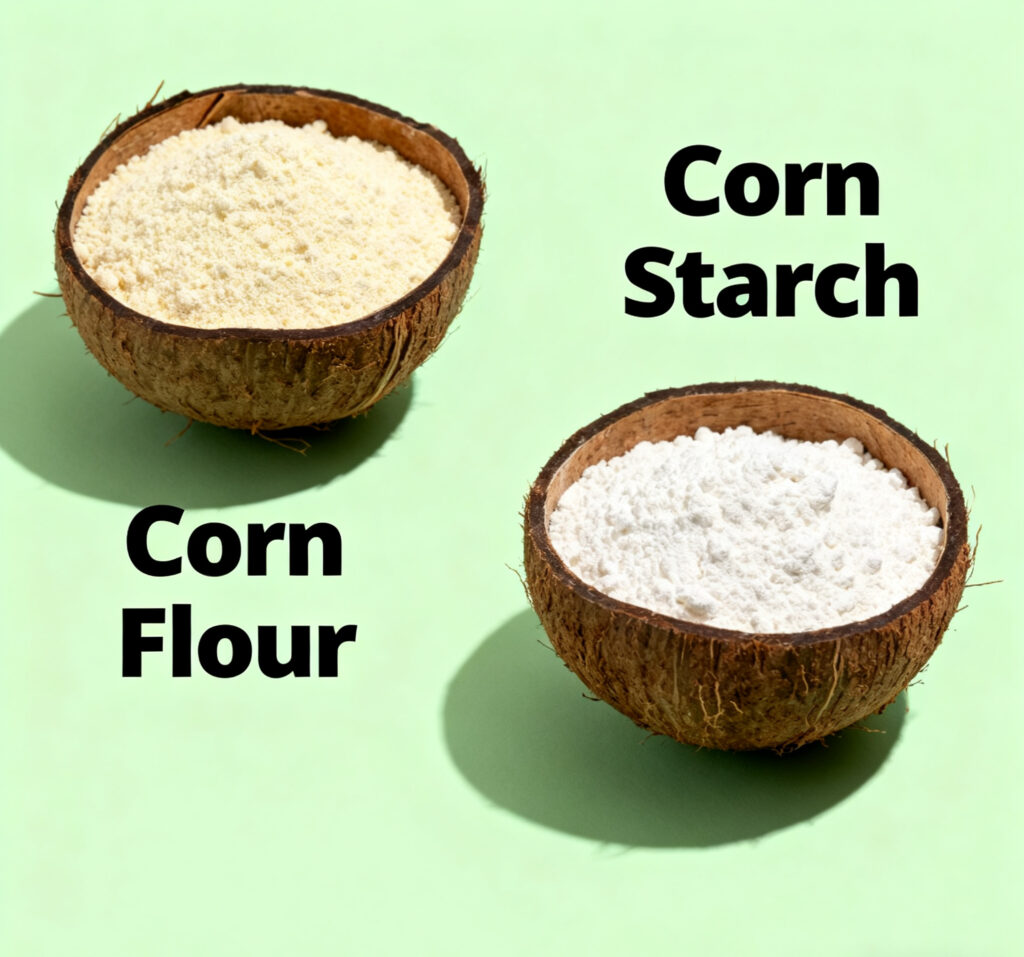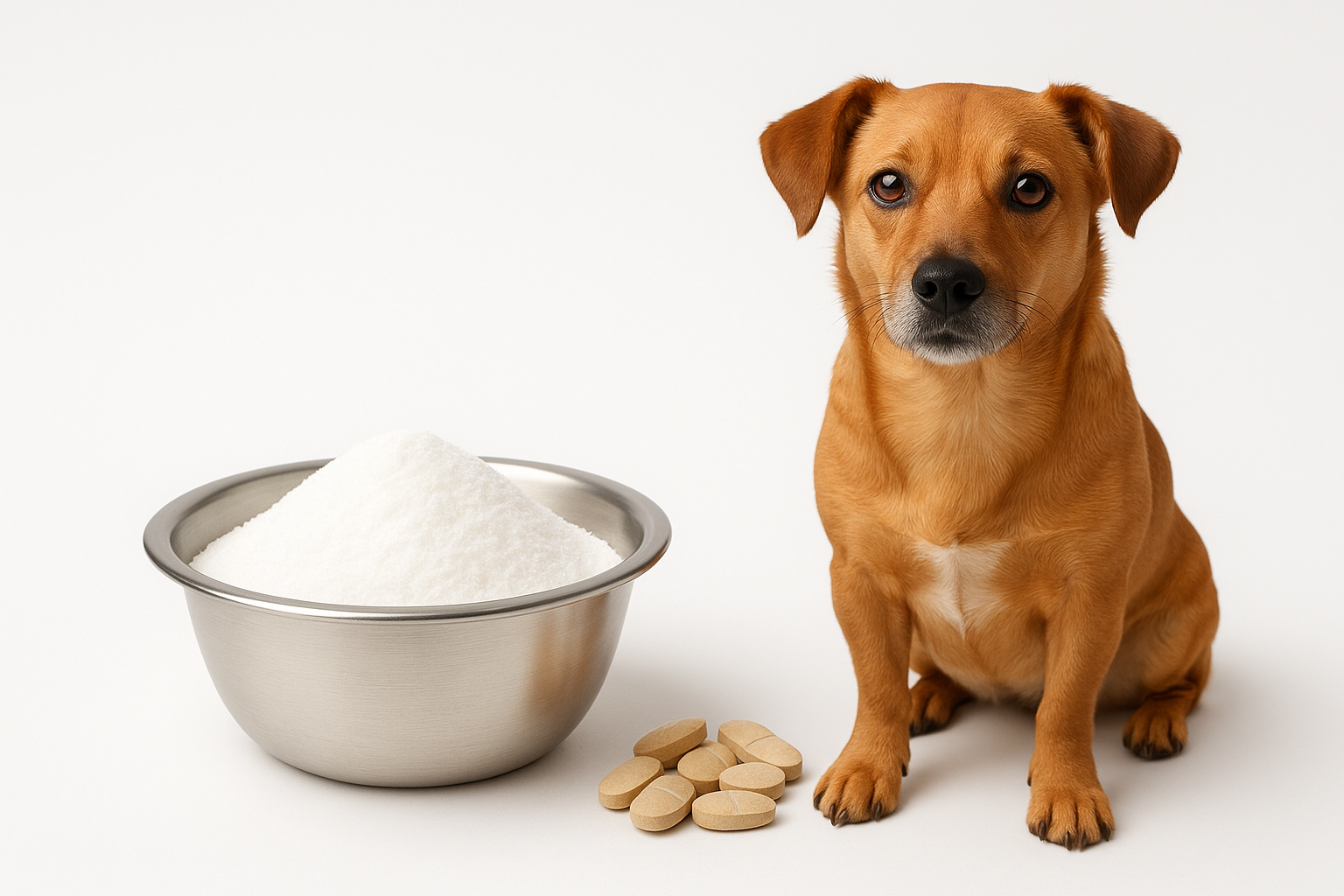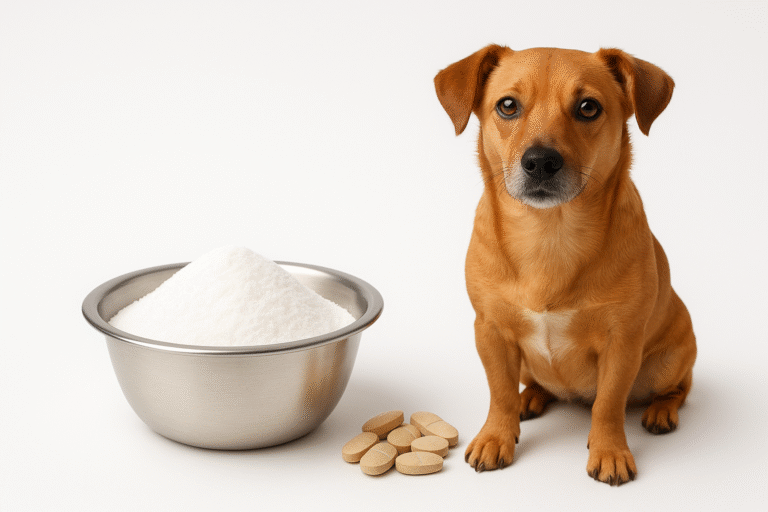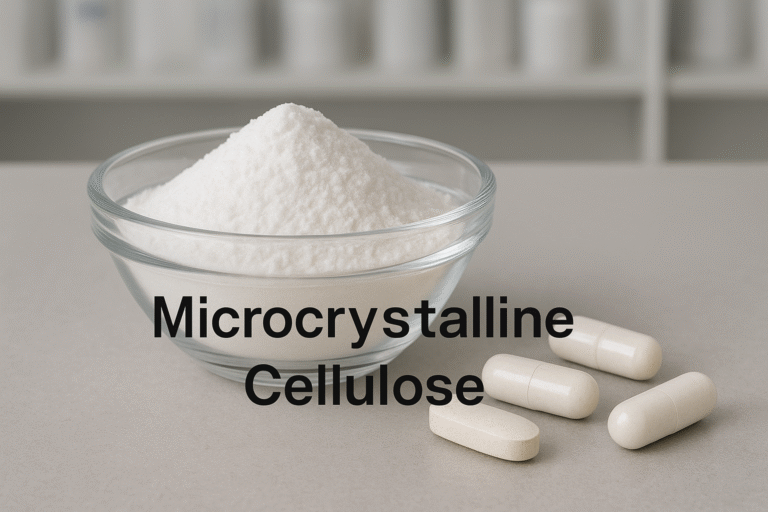
Many food and supplement manufacturers struggle with selecting the correct maize‐derived ingredient. The terms “corn flour” and “corn starch” are often used interchangeably, yet they have major differences in processing, functionality and application. Using the wrong one can lead to poor texture, issues with stability or inconsistent performance. Understanding the distinction is critical for formulation success and supplier evaluation.
By clearly identifying what corn flour and corn starch are, how they differ and where each excels, you gain control over your ingredient choices. This helps avoid product issues and ensures you meet both functional and regulatory requirements effectively.
Corn flour is produced by finely grinding whole dried corn kernels (including germ, fiber and endosperm) so it contains starch, protein, fiber and other nutrients. In contrast, corn starch is significantly more refined: only the starchy endosperm is extracted, the proteins and fibre are largely removed, resulting in a white powder that is almost pure carbohydrate. Because of these processing differences, corn flour is used more as a flour substitute or for textural enhancement, whereas corn starch is used mainly as a thickener, binder or functional starch.
Now that you have a clear differentiated snapshot of corn flour and corn starch, let’s dive into their structure, processing methods, performance in food and supplement applications, and how manufacturers like you should choose between them.
Table of Contents
- What Are Corn Flour and Corn Starch?
- How Are They Made?
- What Are the Functional Properties of Each?
- What Applications Suit Corn Flour and Corn Starch?
- What Nutritional and Labeling Differences Matter?
- What Should B2B Buyers Consider When Sourcing These Ingredients?
1. What Are Corn Flour and Corn Starch?
“Corn flour” and “corn starch” refer to two distinct maize‐derived powders that differ significantly in composition and use. It’s important for formulation teams and procurement departments to understand exactly which material is meant by these terms.
Corn flour is finely ground whole maize; corn starch is extracted from the endosperm and largely free of fibre and protein.
Diagram showing maize kernel cross-section labelled with germ, fibre, endosperm → arrows pointing to corn flour vs corn starch sources.
| Attribute | Corn Flour | Corn Starch |
|---|---|---|
| Raw material | Whole dried corn kernel | Endosperm of corn kernel |
| Composition | Starch + fibre + protein + micronutrients | Almost pure starch (>90%) |
| Colour | Yellow or colored (depending on corn variety) | White powder |
| Texture | Fine flour with some bite | Very fine, smooth powder |
| This means that corn flour carries more of the whole-corn character and nutritional baggage, while corn starch offers high purity and consistent functionality. |
- Corn flour retains more of the kernel’s original nutrients and structure.
- Corn starch offers performance advantages due to its refined nature and pure starch content.
2. How Are They Made?
The manufacturing route influences performance and cost. For B2B buyers evaluating suppliers, knowing processing differences helps in specification setting and supplier audits.
Corn flour is made by grinding whole kernels; corn starch uses wet‐milling to separate the starch from other components.
Corn Flour Production
- Dry kernel is cleaned and milled into fine powder.
- Retains germ and fibre unless degerminated.
- Less complex processing → lower cost.
Corn Starch Production
- Wet milling: kernels steeped, germ removed, fibre washed out.
- Starchy endosperm isolated, dried, milled into fine pure starch.
- Higher processing cost, but higher functional consistency and purity.
In industrial applications this means corn starch offers narrower specification variability, which is an advantage for high‐performance formulations.
- Wet‐milled corn starch provides high functional purity and consistency.
- Corn flour production is simpler and may carry residual nutrition and particle variability.
3. What Are the Functional Properties of Each?
For formulation teams, understanding how each material behaves under processing (heat, shear, moisture) is essential. Their performance in food systems or supplements will differ accordingly.
Corn flour behaves more like a typical flour, contributing texture and structure; corn starch excels at thickening, binding and textural modification.
| Functional Property | Corn Flour | Corn Starch |
|---|---|---|
| Thickening power | Moderate | Very high |
| Binding in tablets/supps | Lower | Higher |
| Texture mouth‐feel | Grainier, gives corn flavour | Smooth, neutral flavour |
| Thermal/Shear Stability | Less refined → variable | Highly refined → stable |
| Cost per kg | Lower | Higher due to processing |
| In supplement manufacturing, for example, corn starch may be used as a tablet binder or filler where smoothness and consistency are required. Corn flour may be used as a bulking or nutritive filler where flavour and whole‐grain character are desired. |
- Corn starch delivers superior thickening and binding performance in rigid specification systems.
- Corn flour provides cost‐effective bulking with whole‐kernel attributes and flavour contribution.
4. What Applications Suit Corn Flour and Corn Starch?
Choosing the right ingredient depends on the target product type — food vs supplement, functional vs basic, appearance vs cost. Knowing which material suits which application avoids formulation failure.
Corn flour works well in baking, snack coatings and bulk fillings; corn starch is preferred for thickeners, coatings, tablets and high‐performance cleans.
- Food (Bakery/snacks): Corn flour adds corn flavour, colour, and whole grain appeal (cakes, muffins, corn-bread style products).
- Food (Sauces/thickening): Corn starch fits thickening soups, custards, gravies, clear sauces.
- Supplements/tablets: Corn starch used as filler/binder/excipient due to purity and function. Corn flour may be less used due to grainy texture and nutritional variance.
- Premium/clean-label markets: Corn flour might appeal as “whole grain maize flour”, but corn starch can still meet clean‐label if non‐GMO, safe, certified.
Understanding the end‐product requirements (appearance, texture, nutrition, cost) guides the choice between corn flour and corn starch.
- Corn flour supports texture and nutritive claims in food products.
- Corn starch supports functional claims and precision in supplement and high-tech food formulations.
5. What Nutritional and Labeling Differences Matter?
From a procurement and export standpoint, you must be aware of nutritional content, labelling regulations, and market expectations. Corn flour and corn starch differ significantly in nutrients and perception.
Corn flour contains protein, fibre and micronutrients; corn starch is mostly carbohydrate and offers minimal nutritive benefit.
According to published data, a 29-gram serving: corn flour provides ~3 g protein, 2 g fibre and some micronutrients, while corn starch provides 0 g protein, ~0 g fibre and is mainly 28 g carbs.
Labeling nuances:
- In the US, “corn flour” = finely ground whole kernel; “corn starch” = pure starch.
- In UK/Commonwealth, “cornflour” might mean what Americans call cornstarch. Wikipedia
From a B2B wholesale perspective, when selling to different regions verify regional definitions to avoid mis‐labelling or regulatory misfit.
- Corn flour supports fibre and “whole grain” positioning in foods.
- Corn starch supports functional and texture positioning but not necessarily nutrition.
6. What Should Buyers Consider When Sourcing These Ingredients?
If you act as a procurement officer or formulation buyer, selecting the right supplier and technical specification is key — especially for export and private‐label manufacturing.
Evaluate source material, processing, particle size, functional testing, certifications and regional naming conventions when sourcing corn flour or corn starch.
Key sourcing criteria:
- Raw material origin: Non-GMO, traceability, corn variety.
- Processing method: For corn starch ensure endosperm extraction and purity; for corn flour ensure milling fineness and kernel integrity.
- Functional specifications: Particle size, moisture content, colour, performance in thickening or binding tests.
- Certifications: ISO, HACCP, GMP, allergen‐free, export compliance.
- Naming/region: Confirm buyer’s local terminology (UK/US divergence) to avoid misinterpretation.
- Application fit: Match ingredient to end‐use (bakery vs supplement vs thickener).
Careful specification ensures ingredient meets performance, regulatory and labelling requirements across markets.
- Suppliers with rigorous QC and correct spec approval deliver consistent functional performance.
- Clarifying regional definitions and use cases reduces risk of formulation failure or compliance issues.
Understanding the difference between corn flour and corn starch is essential for food and supplement manufacturers who demand consistent performance, regulatory compliance and market‐ready quality. Corn flour offers whole-kernel nutrition and texture for bakery or snack applications. Corn starch offers high functional purity for thickening, binding or precision formulations. As a B2B buyer or manufacturer, aligning the correct ingredient to the correct application and region ensures success in both formulation and supply chain.
At Besty Pharma, U can rely on our high-quality maize‐derived ingredients—whether you need finely milled corn flour for bakery, snack or textural applications or ultra-refined corn starch for functional food, supplement or pharmaceutical use. Our GMP-certified production lines, non-GMO sourcing, fulltesting laboratory and global export experience make us the trusted supplier for OEM/ODM partners worldwide seeking precision, consistency and regulatory readiness. Contact us to discuss your specification, application and supply-chain needs.




